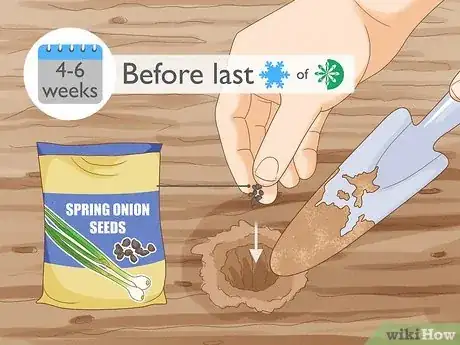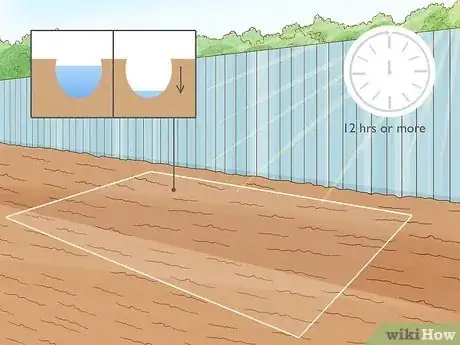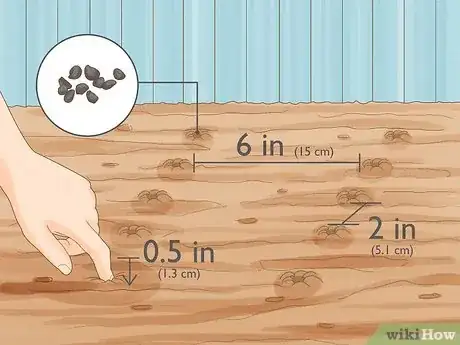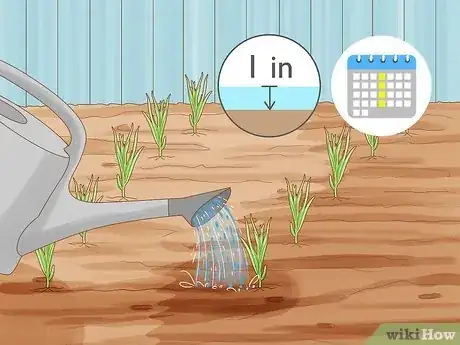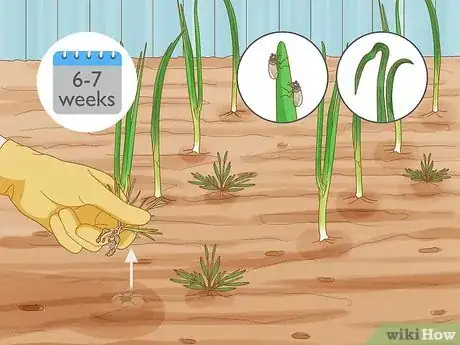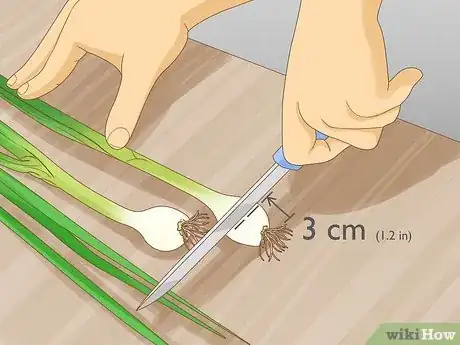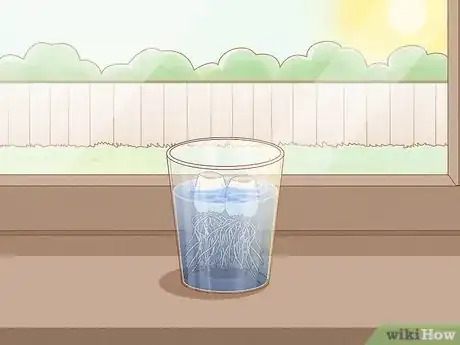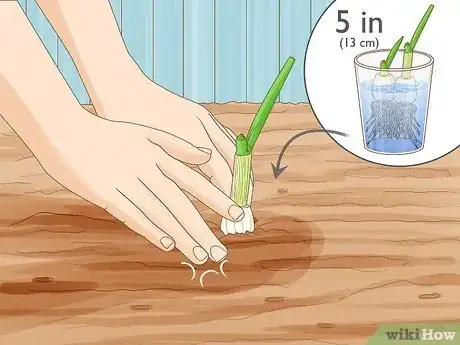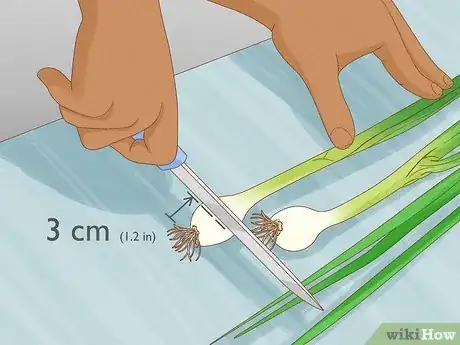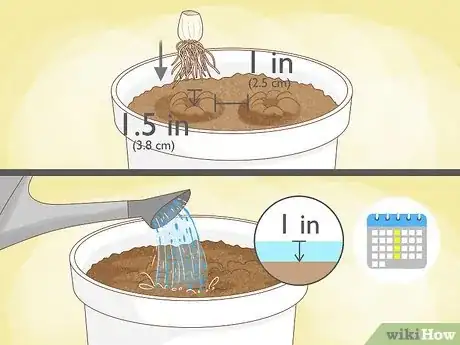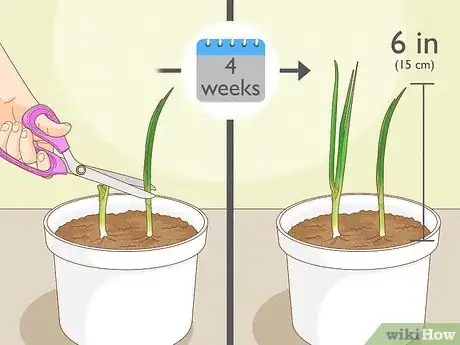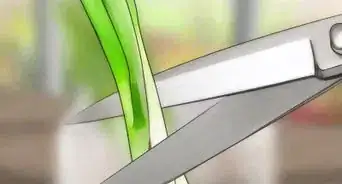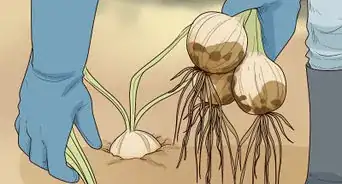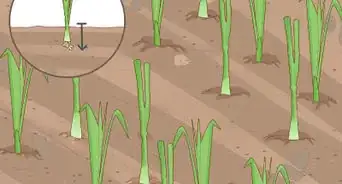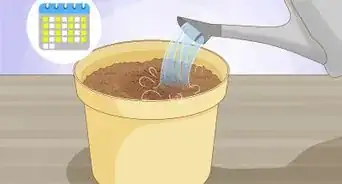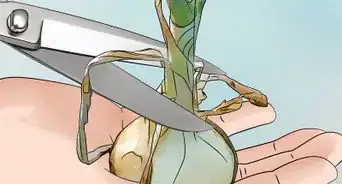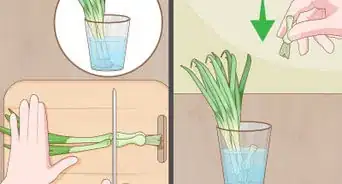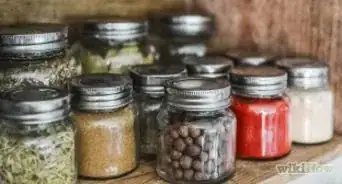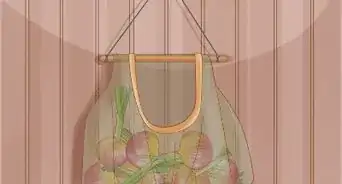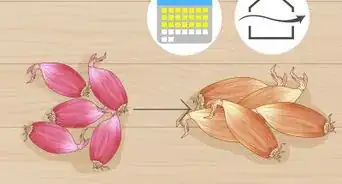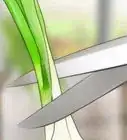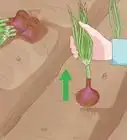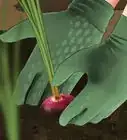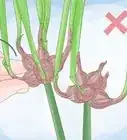This article was co-authored by Steve Masley and by wikiHow staff writer, Dan Hickey. Steve Masley has been designing and maintaining organic vegetable gardens in the San Francisco Bay Area for over 30 years. He is an Organic Gardening Consultant and Founder of Grow-It-Organically, a website that teaches clients and students the ins and outs of organic vegetable gardening. In 2007 and 2008, Steve taught the Local Sustainable Agriculture Field Practicum at Stanford University.
There are 11 references cited in this article, which can be found at the bottom of the page.
wikiHow marks an article as reader-approved once it receives enough positive feedback. In this case, 100% of readers who voted found the article helpful, earning it our reader-approved status.
This article has been viewed 275,531 times.
Spring onions are a delicious addition to any home garden, but how do you grow them successfully? Spring onions are low-maintenance, fast-growing, and don’t take up much space in your planter or garden—basically, they’re a breeze to plant and grow yourself! We’ve put together a handy guide to growing spring onions from seeds, plus how to regrow them from the bulbs or roots. If you’re ready to sow some tasty seeds, keep scrolling!
Steps
Growing from Seeds
-
1Sow spring onion seeds 4 to 6 weeks before the last frost of spring. This is when the soil first becomes workable. In the northern hemisphere, this happens in April or May when the soil is consistently between 50 °F (10 °C) and 68 °F (20 °C) (or even earlier in warmer climates).[1]
- Alternatively, start your seeds in an indoor container or greenhouse 10-12 weeks before the last frost. Transplant outside 4-6 weeks before the final frost.[2]
- Spring onion seeds can be sown anytime during spring through early fall if you're unsure when the last frost will be.
- For a steady supply of spring onions, sow new seeds every 2 weeks during spring and summer.
-
2Choose a sunny spot with well-draining soil to plant the seeds. Choose somewhere that’s semi-sheltered, like against the wall of a garage or house, where the plants will get 12 or more hours of full sun per day. If you’re growing your onions indoors, place the container on a windowsill that gets regular sun.[3]
- Prepare your soil by adding compost, peat, or sand to make it more friable (crumbly). This makes for better drainage and prevents soggy or rotten roots.[4]
- Spring onions grow best when the soil’s pH level is between 6.3 and 6.8. If your soil is too acidic (has a pH level below 6), add limestone to neutralize it.
Advertisement -
3Plant the seeds 0.5 in (1.3 cm) deep, 2 in (5.1 cm) apart. Since the holes are so shallow, real digging isn’t required—just press your finger into the soil to make a depression. Cover the seeds with about 0.5 in (1.3 cm) of fine soil. Plant rows of seeds at least 6 in (15 cm) apart.[5]
- Planting spring onions 2 in (5.1 cm) apart prevents the bulbs from maturing to their full size, giving the onions their sweeter flavor.
- If you don’t have room for rows, scatter the seeds in spare patches around the garden since the plants don’t take up much space.
-
4Give your seedlings 1 inch (2.5 cm) of water per week. Rainfall will usually take care of this. If not, thoroughly soak the soil once a week (or more often if your soil is sandy). 1 inch (2.5 cm) of water will wet sandy soil to a depth of 10 inches (25 cm) and clay soil up to 6 inches (15 cm).[6]
- Use a trowel to check how far down your water reaches. If only the top 2 inches (5.1 cm) are wet, add more water.
-
5Weed your spring onion patch and watch out for pests and fungi. Remove weeds by hand (no chemical weed killers) to eliminate competition for water and nutrients. Since spring onions grow quickly, pests and disease are rarely a problem. Look for the following during the first 6 to 7 weeks of growth:[7]
- Onion flies or lesser bulb flies: These pests burrow into the bulbs and cause the leaves to wilt and the bulbs to rot. Pack the surface soil tightly to make burrowing more difficult, and dig up infected plants to prevent spreading.
- Fungal infections: Fungi forms when onions are too damp and begin to rot. Look for spots, patches, or lesions on the leaves and stems. Destroy infected plants and use organic fungicide to prevent spreading.
-
6Harvest in 8 to 12 weeks when the stems are about 6 inches (15 cm) tall. The earliest onions will be ready to eat after 2 months, but some may need another 2 to 4 weeks.[8] Snip off the edible stems with scissors or shears near the base of the plant and leave the bulb in the ground—the stems will regrow 4 or 5 times throughout the season.[9]
- Cut the stems farther away from the ground to produce a plant that is larger than the average spring onions you’d find at the grocery store.[10]
- Loosen the soil around each bulb gently with a trowel and gently tug the plant out of the ground to harvest the entire plant (the bulbs are delicious too!).
- Stems and bulbs will last several days on a countertop at room temperature. For longer storage, put bulbs or stems in an airtight container or bag and refrigerate for up to 2 weeks.[11]
Growing Root Cuttings in Water
-
1Slice your onion about 3 centimetres (1.2 in) above the roots. Use a sharp knife or garden shears to make a clean cut for faster growth. Set the piece with roots attached to the side and use up the remaining stems and bulb as a garnish or ingredient in your favorite summer dishes.[12]
-
2Place the cutting root side-down in a small jar of fresh water. Make sure the roots are fully submerged and keep the jar on a sunny windowsill or balcony. Change the water at least once a week.[13]
- Once the stems are fully grown, you can snip and use them straight from the jar as needed.
-
3
Replanting Roots and Bulbs
-
1Cut the onions about 3 centimetres (1.2 in) from the roots. Use a sharp knife or shears—a clean, straight cut will result in faster regrowth than a jagged one. Use the rest of the bulb and the stems in your cooking within a day or 2 for maximum freshness.[16]
- Alternatively, purchase spring onion sets instead of cutting the roots. Sets are previously harvested bulbs that have been dried for replanting later.
- Onion sets are more expensive than seeds, but are easier to maintain and are ready to harvest sooner.
-
2Plant your cuttings root side-down in a pot or your garden. Plant them deep enough so that just a little bit of the stem is visible above the soil. If you pot them, place the pot on a sunny windowsill or patio. Make sure they get about 1 inch (2.5 cm) of water per week.[17]
- If you’re planting onion sets, bury them 1.5 inches (3.8 cm) deep and 1 inch (2.5 cm) apart in the same conditions you would plant seeds or cuttings.[18]
- Make sure onion sets are planted with the roots facing down and the pointy tip (which might already have some green on it) facing upward.
-
3
Expert Q&A
Did you know you can get premium answers for this article?
Unlock premium answers by supporting wikiHow
-
QuestionHow do I regrow spring onions from cuttings?
 Steve MasleySteve Masley has been designing and maintaining organic vegetable gardens in the San Francisco Bay Area for over 30 years. He is an Organic Gardening Consultant and Founder of Grow-It-Organically, a website that teaches clients and students the ins and outs of organic vegetable gardening. In 2007 and 2008, Steve taught the Local Sustainable Agriculture Field Practicum at Stanford University.
Steve MasleySteve Masley has been designing and maintaining organic vegetable gardens in the San Francisco Bay Area for over 30 years. He is an Organic Gardening Consultant and Founder of Grow-It-Organically, a website that teaches clients and students the ins and outs of organic vegetable gardening. In 2007 and 2008, Steve taught the Local Sustainable Agriculture Field Practicum at Stanford University.
Home & Garden Specialist
-
QuestionDo spring onions regrow?
 Maggie MoranMaggie Moran is a Professional Gardener in Pennsylvania.
Maggie MoranMaggie Moran is a Professional Gardener in Pennsylvania.
Home & Garden Specialist
-
QuestionHow long do spring onions take to grow?
 Maggie MoranMaggie Moran is a Professional Gardener in Pennsylvania.
Maggie MoranMaggie Moran is a Professional Gardener in Pennsylvania.
Home & Garden Specialist
Things You’ll Need
Growing from Seeds
- Spring onion seeds
- Scissors or garden shears
- Airtight container or bag (optional)
- Indoor plant container or pot (optional)
- Organic fungicide (optional)
Growing Root Cuttings in Water
- Scissors or garden shears
- Small jar
- Pot (optional)
Replanting Roots and Bulbs
- Scissors or garden shears
- Pot (optional)
- Onion sets (optional)
References
- ↑ https://www.gardenate.com/plant/Spring%2Bonions
- ↑ https://harvesttotable.com/planting_onions/
- ↑ https://www.gardenate.com/plant/Spring%2Bonions
- ↑ https://www.no-dig-vegetablegarden.com/growing-spring-onions.html
- ↑ https://www.no-dig-vegetablegarden.com/growing-spring-onions.html
- ↑ https://extension.umn.edu/vegetables/growing-scallions-home-gardens#watering-585460
- ↑ https://www.no-dig-vegetablegarden.com/onion-pests-and-diseases.html
- ↑ https://www.no-dig-vegetablegarden.com/growing-spring-onions.html
- ↑ https://extension.umn.edu/vegetables/growing-scallions-home-gardens#harvest-585464
- ↑ https://www.allrecipes.com/article/save-money-diy-fresh-green-onions/
- ↑ https://www.thekitchn.com/the-best-way-to-store-spring-onions-242480
- ↑ https://www.brisbane.qld.gov.au/clean-and-green/green-home-and-community/clean-and-green-blog/regrow-your-own-spring-onions-at-home
- ↑ https://www.brisbane.qld.gov.au/clean-and-green/green-home-and-community/clean-and-green-blog/regrow-your-own-spring-onions-at-home
- ↑ https://www.allrecipes.com/article/save-money-diy-fresh-green-onions/
- ↑ https://www.brisbane.qld.gov.au/clean-and-green/green-home-and-community/clean-and-green-blog/regrow-your-own-spring-onions-at-home
- ↑ https://www.brisbane.qld.gov.au/clean-and-green/green-home-and-community/clean-and-green-blog/regrow-your-own-spring-onions-at-home
- ↑ https://www.brisbane.qld.gov.au/clean-and-green/green-home-and-community/clean-and-green-blog/regrow-your-own-spring-onions-at-home
- ↑ https://oldworldgardenfarms.com/2021/03/11/planting-onion-sets/
- ↑ https://www.brisbane.qld.gov.au/clean-and-green/green-home-and-community/clean-and-green-blog/regrow-your-own-spring-onions-at-home
- ↑ https://oldworldgardenfarms.com/2021/03/11/planting-onion-sets/
- ↑ https://gardenerspath.com/plants/vegetables/grow-bunching-onions/
- ↑ https://www.gardenate.com/plant/Spring%2Bonions
- ↑ https://www.gardenate.com/plant/Spring%2Bonions
- ↑ https://www.brisbane.qld.gov.au/clean-and-green/green-home-and-community/clean-and-green-blog/regrow-your-own-spring-onions-at-home
About This Article
If you want to grow spring onions from seeds, select an open area in your garden that receives plenty of sunlight and break up the soil well. Test the soil to ensure it’s between 6.8 and 6.8, and use additives to adjust the soil if it’s out of range. A week before planting the seeds, add a general fertilizer to the soil and mix it in. Plant the seeds in 1/2-inch deep holes between March and July, and water the onions whenever the soil is dry. Harvest your spring onions after 8 weeks. For tips from our horticulture reviewer on regrowing store-bought onions, read on!
